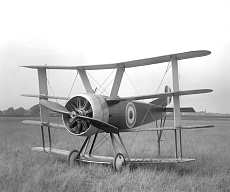| Wight Quadruplane | |
|---|---|
 | |
| Wight Quadruplane first version with landing gear partially recessed in lower wing, August 1916 | |
| Role | Fighter |
| National origin | British |
| Manufacturer | J. Samuel White |
| Designer | Howard T Wright |
| First flight | Mid 1916 |
| Number built | 1 |
The Wight Quadruplane, also referred to as the Wight Type 4, [1] was a British single seat quadruplane fighter aircraft built by J Samuel White & Company Limited (Wight Aircraft) during World War I. Testing revealed design deficiencies and after the only example was involved in a crash, further work on the aircraft was abandoned. [1]
Contents

